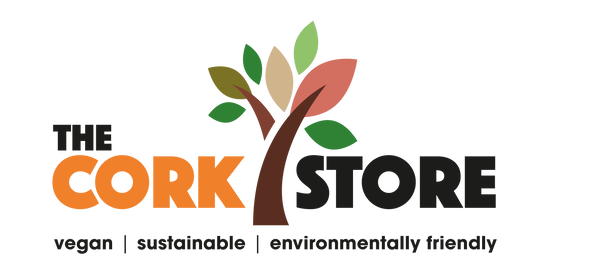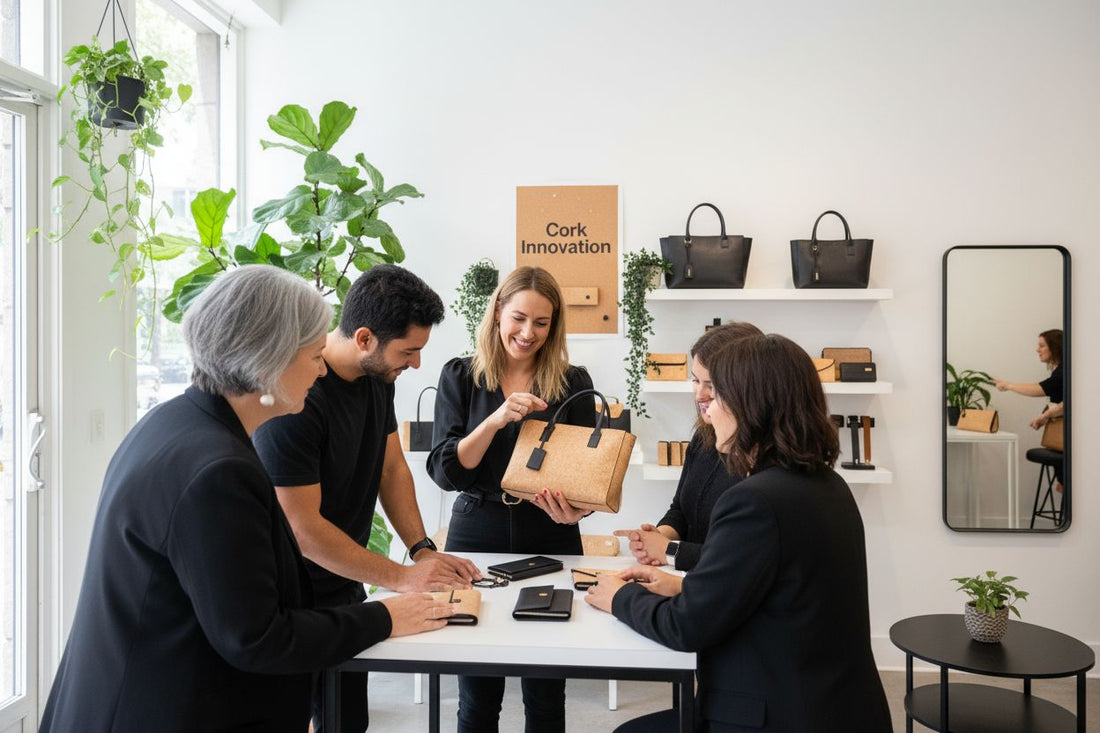
Understanding Cork Innovation in Accessories
Share
Cork might seem like a humble material, usually glimpsed in wine bottles or old noticeboards. Yet every year, around 340,000 tonnes of cork are harvested globally without cutting down a single tree. Turns out, cork is not just gentle on the planet but transforms ordinary accessories into something both stylish and sustainable. Designs once limited by leather and plastic are now being pushed forward by this remarkable, earth-friendly material.
Table of Contents
- What Is Cork and Its Unique Properties?
- Why Choose Cork Innovation in Fashion Accessories?
- How Cork Is Transforming the Accessories Market
- Key Concepts Behind Cork Sustainability and Fashion
Quick Summary
| Takeaway | Explanation |
|---|---|
| Cork is a renewable resource. | Harvested from cork oak trees, cork regenerates naturally, making it sustainable for the environment. |
| Cork accessories are lightweight and durable. | The unique cellular structure of cork makes accessories flexible, water-resistant, and resistant to wear and tear. |
| Choosing cork supports ethical fashion. | Cork accessories offer a cruelty-free alternative to leather, combining style with environmental responsibility. |
| Cork promotes biodiversity and economic growth. | The cork industry sustains local ecosystems and economies while encouraging responsible resource management. |
| Cork innovation drives market changes. | Consumers are increasingly seeking eco-friendly accessories, leading brands to adapt to sustainable materials like cork. |
What is Cork and Its Unique Properties?
Cork represents a remarkable natural material with extraordinary characteristics that make it an innovative solution in sustainable accessories. Harvested from the bark of cork oak trees primarily found in Mediterranean regions, this renewable resource offers unprecedented versatility and environmental benefits.
The Natural Origins of Cork
Cork originates from the bark of cork oak trees (Quercus suber), which possess a remarkable ability to regenerate their bark after harvesting. According to research from the World Wildlife Fund, cork oak forests are critical ecosystems that support biodiversity and provide sustainable economic opportunities for local communities. What makes cork truly exceptional is its harvesting process: skilled workers carefully strip the bark without harming the tree, allowing it to continue growing and producing cork for decades.
Extraordinary Material Properties
The unique cellular structure of cork gives it extraordinary properties that set it apart from other natural materials. Cork consists of millions of microscopic air-filled cells, creating a lightweight yet incredibly durable substance. These properties make cork an ideal material for accessories, offering several distinctive advantages:
- Lightweight and flexible for comfortable wearing experience
- Water-resistant and naturally protective against moisture
- Highly durable with remarkable resistance to wear and tear
- Naturally hypoallergenic and suitable for sensitive skin
Moreover, cork innovation in accessories has transformed how designers approach sustainable fashion. Our guide on understanding cork’s role in sustainable fashion provides deeper insights into this remarkable material’s potential.
The material’s natural elasticity and resilience mean accessories crafted from cork can withstand daily use while maintaining their aesthetic appeal. Its unique texture provides a sophisticated alternative to traditional leather, appealing to environmentally conscious consumers seeking stylish and ethical fashion choices.
The table below summarises the distinctive features of cork that make it especially suitable for use in fashion accessories, highlighting both practical and ethical qualities for easy reference.
| Feature / Property | Description |
|---|---|
| Lightweight | Cork’s cellular structure makes accessories light and comfortable to wear. |
| Flexible | Natural elasticity ensures products adapt to movement and retain shape easily. |
| Water-resistant | Provides effective protection against moisture and everyday spills. |
| Durable | Resists wear and tear, maintaining aesthetic quality over prolonged use. |
| Hypoallergenic | Naturally suitable for sensitive skin, reducing the risk of irritation. |
| Cruelty-free | Alternative to leather, supporting ethical fashion and animal welfare. |
| Environmentally sustainable | Harvesting does not harm trees and supports biodiversity and carbon sequestration. |
Why Choose Cork Innovation in Fashion Accessories?
Cork innovation represents more than just a trend in sustainable fashion it signals a fundamental transformation in how we perceive and interact with accessories. By selecting cork accessories, consumers make a powerful statement about environmental responsibility and personal style simultaneously.
Environmental Impact and Sustainability
Research from the Ellen MacArthur Foundation highlights that sustainable materials like cork are crucial in developing circular economy practices. Cork production stands out as an exceptional model of environmental stewardship. The harvesting process does not harm cork oak trees, which continue absorbing carbon dioxide and supporting biodiversity even after bark removal. This regenerative characteristic means each cork accessory represents a positive environmental choice.
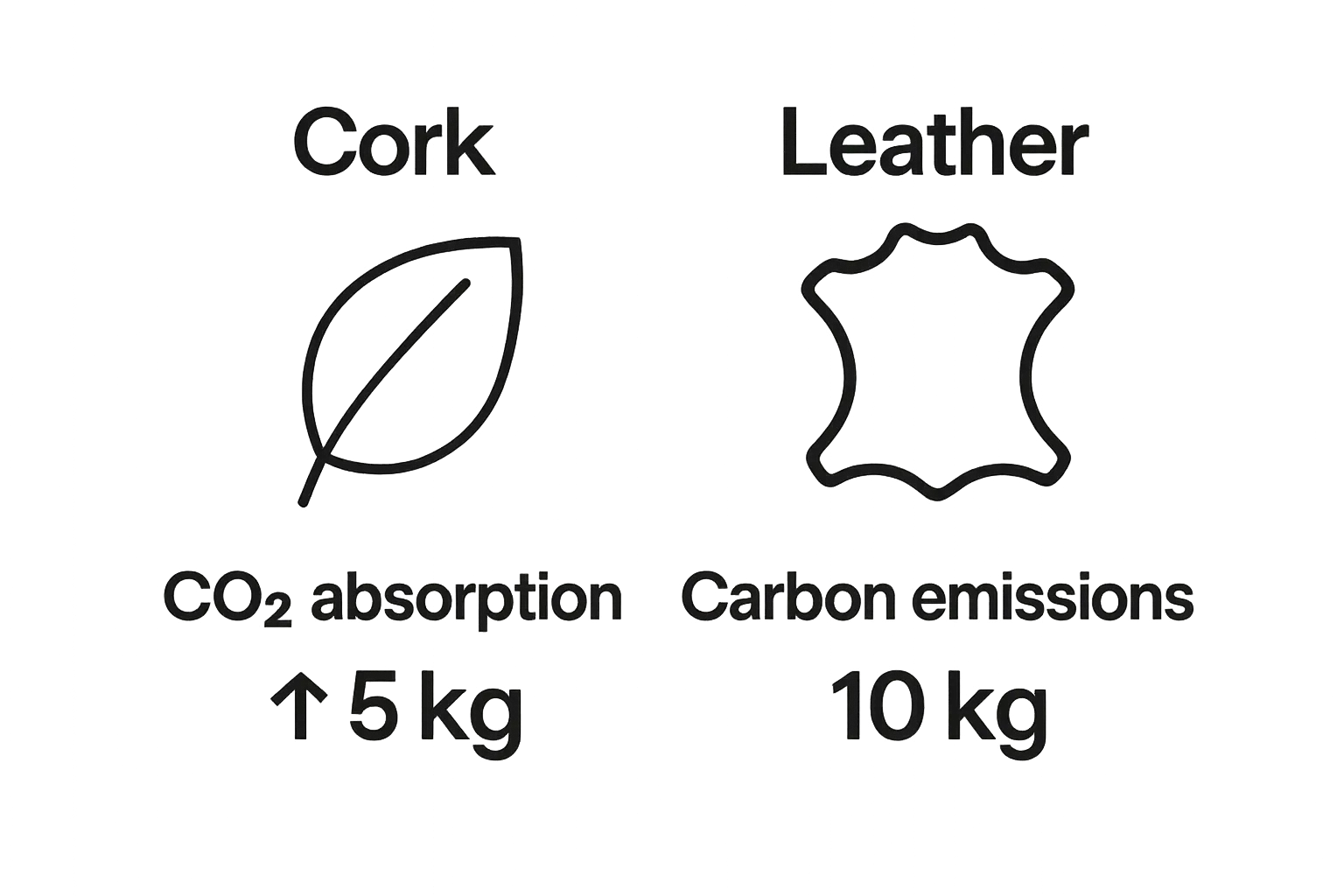
Ethical and Performance Advantages
Cork accessories offer remarkable benefits that extend far beyond environmental considerations. These innovative products combine aesthetic appeal with practical performance, creating accessories that are both beautiful and functional. Key advantages include:
- Cruelty-free alternative to traditional leather materials
- Minimal environmental footprint compared to synthetic alternatives
- Superior durability that maintains aesthetic quality over time
- Naturally water-resistant properties protecting against daily wear
Our guide to unique cork bag designs provides additional insights into how designers are reimagining sustainable fashion.
Moreover, cork innovation challenges traditional accessory manufacturing by demonstrating that ethical production can coexist with high-performance design. The material’s unique cellular structure provides inherent flexibility, lightweight characteristics, and remarkable resilience. Consumers choosing cork accessories are not just purchasing a product they are supporting a more thoughtful approach to fashion consumption that prioritizes environmental consciousness without compromising on style or quality.
This table compares cork accessories with traditional leather and synthetic materials, focusing on sustainability, ethical considerations, and practical performance, to support conscious purchasing decisions.
| Attribute | Cork Accessories | Traditional Leather | Synthetic Alternatives |
|---|---|---|---|
| Sustainability | Renewable, tree-friendly | Resource-intensive, often harmful | Typically non-renewable, often polluting |
| Ethical Production | Cruelty-free, no animal use | Relies on animal products | May involve toxic chemicals |
| Water Resistance | Naturally resistant | Varies (often treated) | Often water resistant but less durable |
| Durability | Highly durable, resilient | Durable with care | Can be less durable, synthetic cracking |
| Weight | Lightweight | Heavier | Lightweight or variable |
| Aesthetic Appeal | Unique, natural texture | Classic, traditional look | Can vary, sometimes less premium |
How Cork is Transforming the Accessories Market
The accessories market is experiencing a radical transformation driven by sustainable materials, with cork emerging as a groundbreaking innovation that challenges traditional manufacturing paradigms. This shift represents more than a passing trend it signals a fundamental reimagining of how fashion accessories can be designed, produced, and consumed.
Design Revolution and Material Innovation
According to a report by McKinsey & Company, sustainable materials are increasingly becoming a critical differentiator in the fashion industry. Cork is at the forefront of this revolution, offering designers unprecedented opportunities to create unique, environmentally responsible accessories. Its remarkable properties enable intricate designs that were previously impossible with conventional materials, allowing for texture, flexibility, and aesthetic diversity that traditional leather or synthetic alternatives cannot match.
Economic and Consumer Driven Transformation
The cork accessories market is experiencing significant growth driven by evolving consumer preferences. Modern buyers are increasingly prioritising ethical and sustainable products, recognising that their purchasing decisions have broader environmental implications. Key market transformation indicators include:
- Increasing consumer demand for transparent, eco-friendly manufacturing processes
- Growing investment in sustainable material research and development
- Shifting brand strategies towards more environmentally responsible product lines
- Rising awareness about the environmental impact of traditional accessory materials
Explore our unique collection of cork accessories that showcase the incredible potential of this innovative material.
Moreover, cork is transforming supply chains by introducing a regenerative material that supports local ecosystems and provides economic opportunities for traditional cork-producing regions. By reimagining accessories through a lens of sustainability, designers are not just creating products they are participating in a broader movement towards responsible consumption and circular economic models that prioritise both aesthetic excellence and environmental stewardship.
Key Concepts Behind Cork Sustainability and Fashion
Sustainability in fashion represents a complex ecosystem of responsible practices, material choices, and innovative design strategies. Cork emerges as a pivotal material that embodies these principles, transcending traditional manufacturing approaches and redefining environmental consciousness in the accessories market.
Regenerative Material Lifecycle
Research from the Sustainable Materials Management Network demonstrates that truly sustainable materials must possess regenerative capabilities. Cork exemplifies this principle through its extraordinary harvesting process. Cork oak trees are not cut down during bark extraction, allowing them to continue growing and absorbing carbon dioxide. This unique characteristic means each cork accessory represents a closed-loop production model that actively contributes to environmental preservation.
Ecological and Economic Interconnectedness
Cork sustainability extends beyond environmental considerations, creating intricate connections between ecological preservation and economic development. The cork industry supports complex ecosystems and provides economic opportunities for communities in cork-producing regions. Key sustainability principles include:
- Biodiversity preservation through responsible forest management
- Carbon sequestration by maintaining healthy cork oak forests
- Economic empowerment for local communities dependent on cork production
- Minimal waste generation throughout the production process
Our comprehensive guide on cork sustainability provides deeper insights into these interconnected systems.
Moreover, cork represents a paradigm shift in how we conceptualise sustainable fashion. By prioritising materials that are both environmentally responsible and aesthetically sophisticated, designers challenge traditional manufacturing models. The material demonstrates that sustainability need not compromise style or quality, but can instead enhance the intrinsic value of accessories through ethical production methods and innovative design approaches.
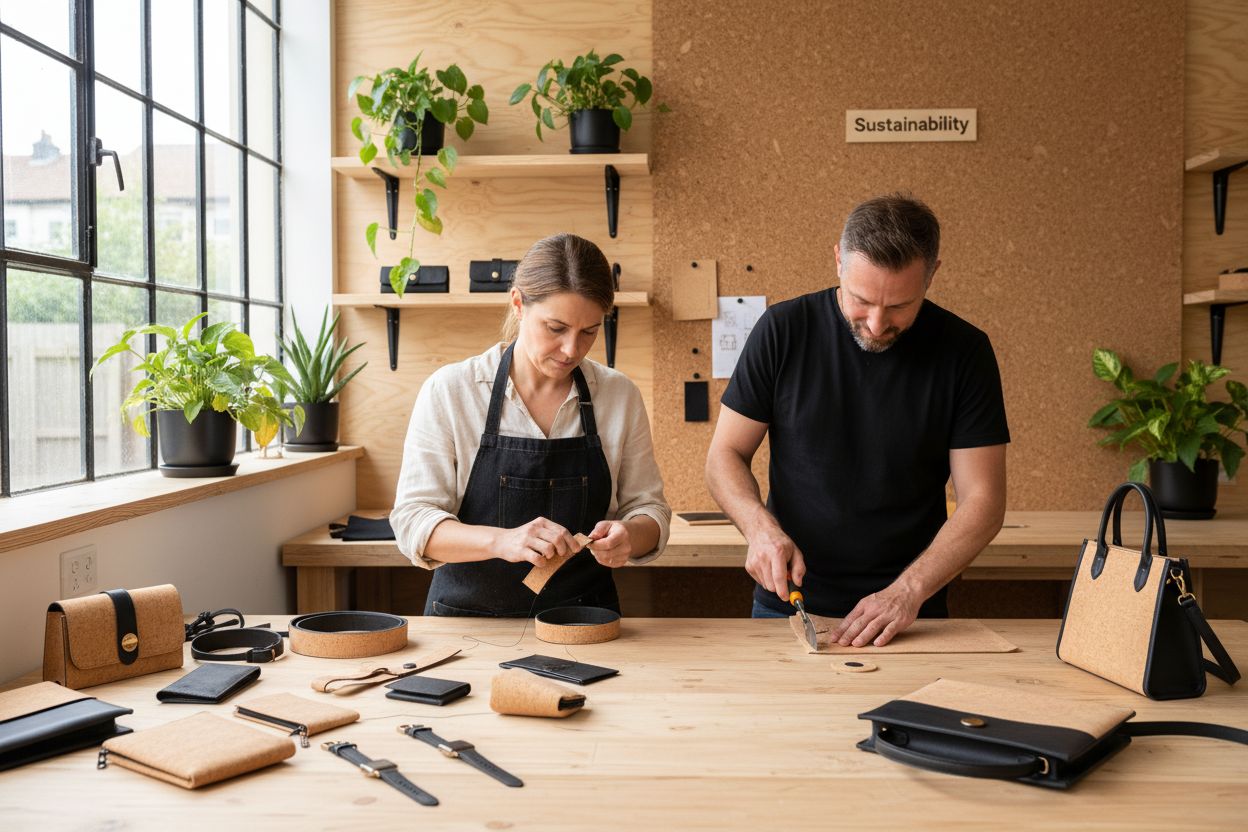
Experience the Next Generation of Ethical Accessories at The Cork Store
Looking for accessories that reflect both your sense of style and your commitment to the planet? Our article on cork innovation explored key challenges like the search for cruelty-free materials, the need for durable quality without compromise, and the growing importance of making fashion choices that protect nature and support regeneration. At The Cork Store, these values meet real products. Discover beautifully crafted handbags, purses and wallets created from renewable cork that stays true to sustainable fashion principles.
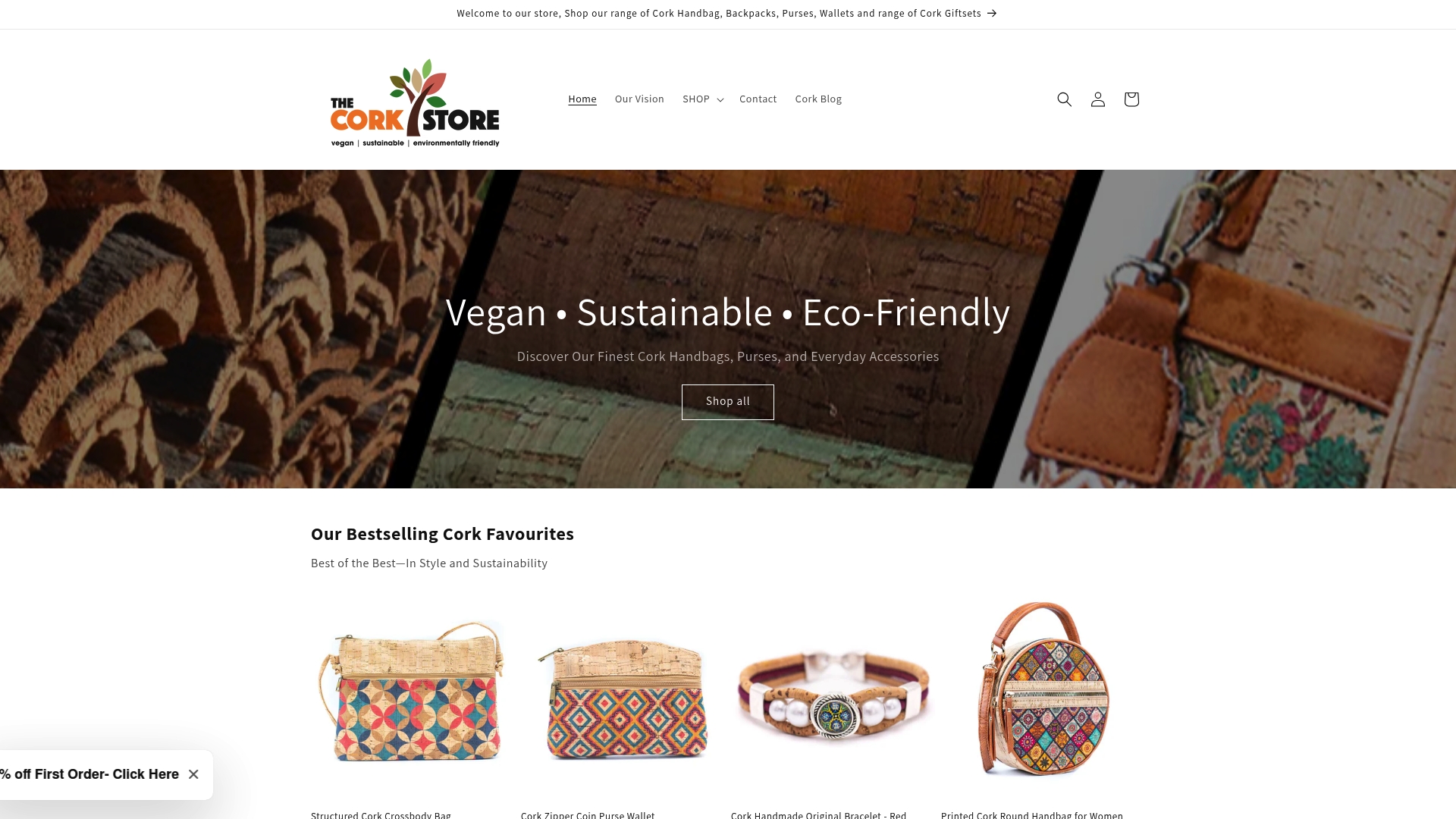
Make your next accessory choice count. Explore the full collection of eco-friendly cork accessories that proves ethical can also be elegant. See how cork’s natural benefits come to life by visiting The Cork Store now. Choose better for yourself and the environment—these unique and guilt-free styles are waiting for you today.
Frequently Asked Questions
What are the unique properties of cork that make it suitable for accessories?
Cork has a unique cellular structure consisting of millions of air-filled cells, making it lightweight, durable, water-resistant, and hypoallergenic. These properties contribute to a comfortable wearing experience and enhance the longevity of cork accessories.
How is cork harvested without harming the environment?
Cork is harvested from the bark of cork oak trees in a process that allows the trees to regenerate their bark after stripping. This sustainable method means that the trees can continue to grow and absorb carbon dioxide, contributing positively to the environment even after their bark has been harvested.
What are the environmental benefits of choosing cork accessories?
Choosing cork accessories supports sustainable practices as cork production requires minimal resources and allows for biodiversity preservation. The harvesting process does not harm the trees, making each cork product an environmentally responsible choice that contributes to carbon sequestration and economic opportunities for local communities.
How do cork accessories compare to traditional leather alternatives?
Cork accessories are a cruelty-free and environmentally friendly alternative to traditional leather. They offer similar aesthetic and practical benefits while being more sustainable, as cork has a minimal environmental footprint compared to synthetic materials and traditional leather production.
